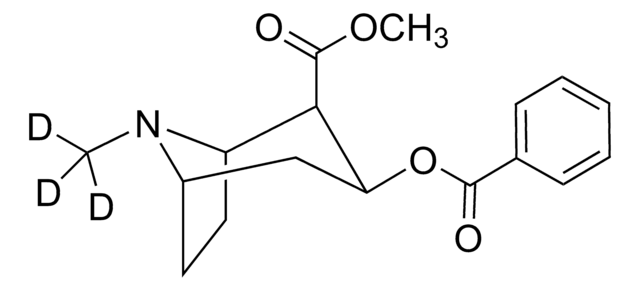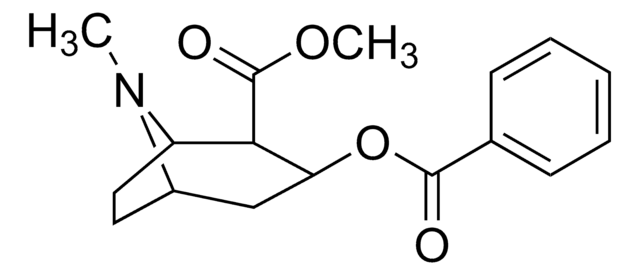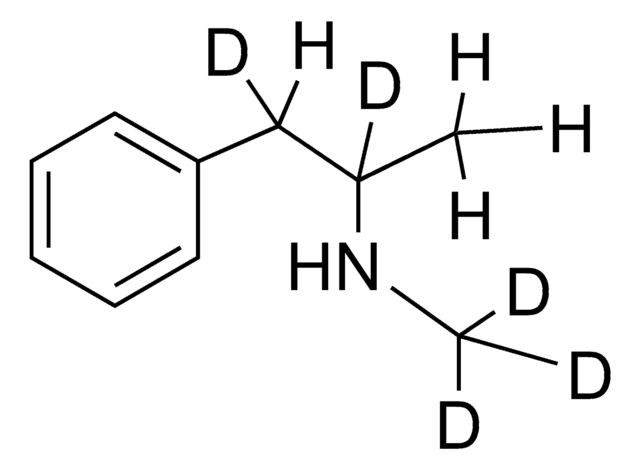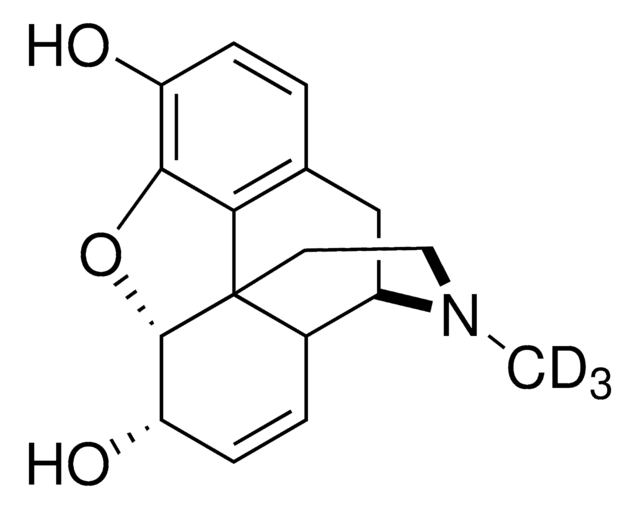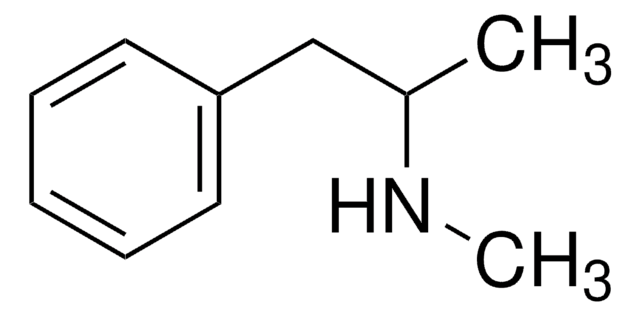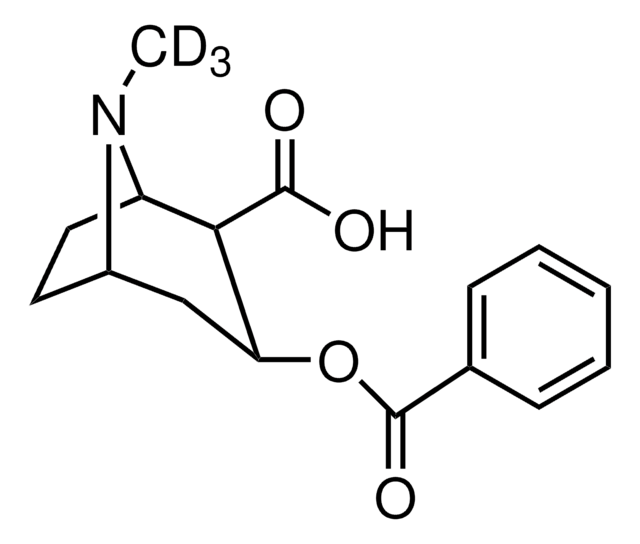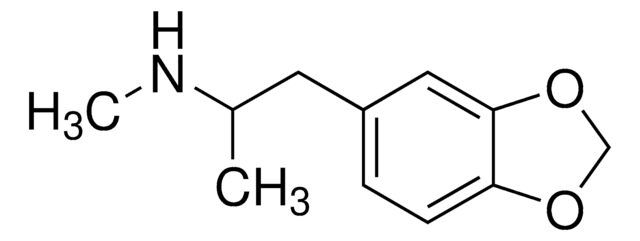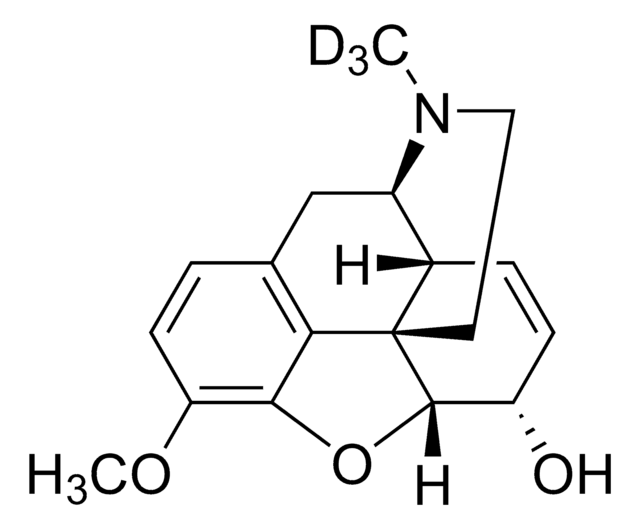Wichtige Dokumente
B-001
Benzoylecgonin-d3 -Lösung
100 μg/mL in methanol, ampule of 1 mL, certified reference material, Cerilliant®
Synonym(e):
Benzoylecgonin-N-methyl-d3 -Lösung
About This Item
Empfohlene Produkte
Qualität
certified reference material
Form
liquid
Leistungsmerkmale
SNAP-N-SPIKE®, SNAP-N-SHOOT®
Verpackung
ampule of 1 mL
Hersteller/Markenname
Cerilliant®
drug control
Narcotic Licence Schedule A (Switzerland); estupefaciente (Spain); Decreto Lei 15/93: Tabela IB (Portugal)
Konzentration
100 μg/mL in methanol
Methode(n)
gas chromatography (GC): suitable
liquid chromatography (LC): suitable
Anwendung(en)
forensics and toxicology
Format
single component solution
Massenverschiebung
M+3
Versandbedingung
wet ice
Lagertemp.
−20°C
SMILES String
[2H]C([2H])([2H])N1[C@H]2CC[C@@H]1[C@H]([C@H](C2)OC(=O)c3ccccc3)C(O)=O
InChI
1S/C16H19NO4/c1-17-11-7-8-12(17)14(15(18)19)13(9-11)21-16(20)10-5-3-2-4-6-10/h2-6,11-14H,7-9H2,1H3,(H,18,19)/t11-,12+,13-,14+/m0/s1/i1D3
InChIKey
GVGYEFKIHJTNQZ-GZBWLTEMSA-N
Suchen Sie nach ähnlichen Produkten? Aufrufen Leitfaden zum Produktvergleich
Allgemeine Beschreibung
Rechtliche Hinweise
Ähnliches Produkt
Signalwort
Danger
H-Sätze
Gefahreneinstufungen
Acute Tox. 3 Dermal - Acute Tox. 3 Inhalation - Acute Tox. 3 Oral - Flam. Liq. 2 - STOT SE 1
Zielorgane
Eyes,Central nervous system
Lagerklassenschlüssel
3 - Flammable liquids
WGK
WGK 2
Flammpunkt (°F)
49.5 °F - closed cup
Flammpunkt (°C)
9.7 °C - closed cup
Zulassungslistungen
Zulassungslistungen werden hauptsächlich für chemische Produkte erstellt. Für nicht-chemische Produkte können hier nur begrenzte Angaben gemacht werden. Kein Eintrag bedeutet, dass keine der Komponenten gelistet ist. Es liegt in der Verantwortung des Benutzers, die sichere und legale Verwendung des Produkts zu gewährleisten.
EU REACH Annex XVII (Restriction List)
Hier finden Sie alle aktuellen Versionen:
Analysenzertifikate (COA)
It looks like we've run into a problem, but you can still download Certificates of Analysis from our Dokumente section.
Wenn Sie Hilfe benötigen, wenden Sie sich bitte an Kundensupport
Besitzen Sie dieses Produkt bereits?
In der Dokumentenbibliothek finden Sie die Dokumentation zu den Produkten, die Sie kürzlich erworben haben.
Kunden haben sich ebenfalls angesehen
Unser Team von Wissenschaftlern verfügt über Erfahrung in allen Forschungsbereichen einschließlich Life Science, Materialwissenschaften, chemischer Synthese, Chromatographie, Analytik und vielen mehr..
Setzen Sie sich mit dem technischen Dienst in Verbindung.
